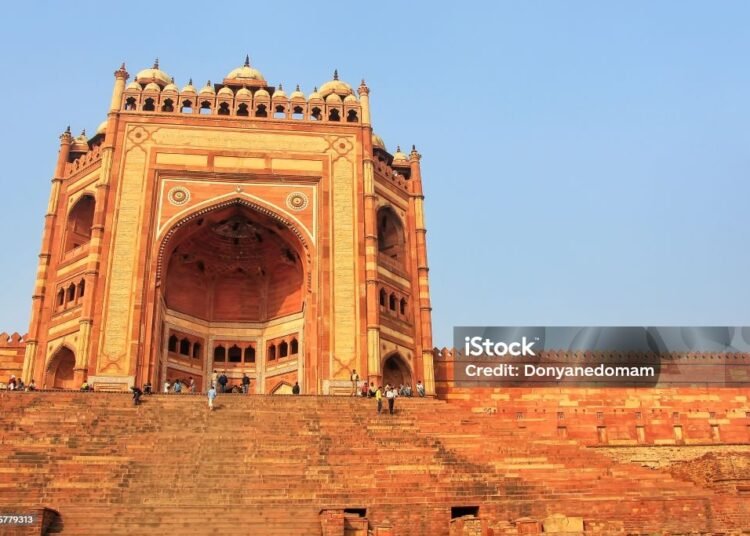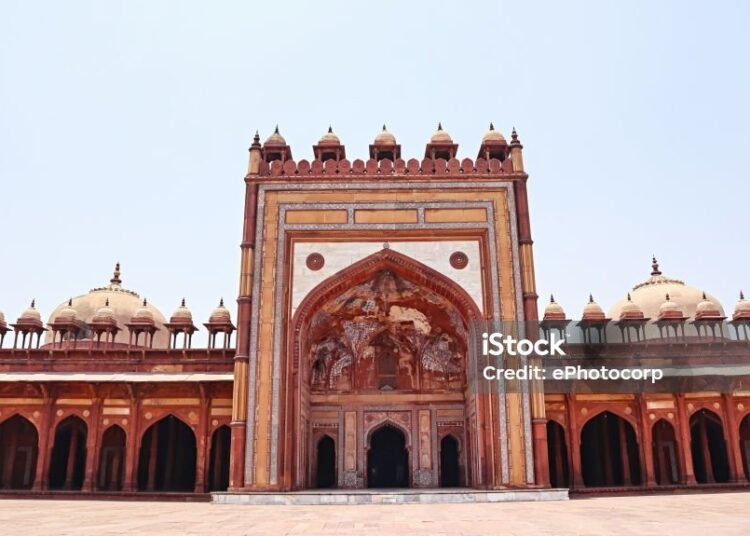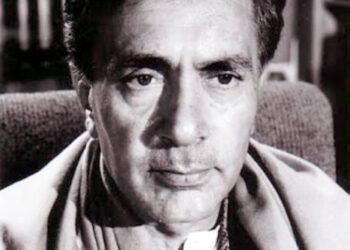Introduction
Fatehpur Sikri, perched on a ridge near Agra, is Emperor Akbar’s audacious experiment in city-making—a 16th-century Mughal capital conceived as a complete urban cosmos of power, piety, and pedagogy. Built rapidly between c. 1571 and 1585, it fuses Persianate planning with Indic craft, red sandstone tectonics with marble highlights, and imperial formalism with everyday life. Though the capital shifted after little more than a decade, the city’s palatial courts, Sufi shrine, mosques, caravanserais, and service quarters remain a remarkably intact snapshot of Mughal statecraft, aesthetics, and ideology.

Founding Vision and Setting
Political-spiritual impetus: Akbar established his capital at Sikri after seeking the blessings of the Sufi saint Sheikh Salim Chishti, whose prophecy of a male heir came true. The renaming to “Fatehpur” (City of Victory) proclaimed dynastic fortune and imperial destiny.
Site and material: Raised on an outcrop commanding long horizons, the city was built largely in local red sandstone, lending visual unity and warmth, offset by white marble in sacred precincts.
Urban Plan: Axes, Precincts, and Hierarchies
Poly-nuclear layout: Fatehpur Sikri is not a single axial vista but a tessellation of specialized precincts—imperial courts, religious ensembles, residential clusters, and commercial/service zones—stitched by processional paths and thresholds.
Terraces and courtyards: Level changes orchestrate movement from public to private, from audience squares to intimate pavilions; courtyards calibrate light, air, and ceremony.
Water and storage: Step-wells, channels, and tanks, along with vast granaries and stables, speak to logistics and resilience.
The Sacred Precinct: Jama Masjid and Salim Chishti’s Dargah
Jama Masjid: A grand congregational mosque framing an expansive court, it anchors the city’s spiritual core. The mosque’s screens, carved brackets, and bays demonstrate Indo-Islamic synthesis.
Buland Darwaza: A colossal southern gateway commemorating Akbar’s Gujarat victory, it is a rhetorical facade and spatial climax, its soaring flight of steps dramatizing ascent.
Tomb of Salim Chishti: A luminous marble pavilion set in the mosque court, with pierced stone screens (jali) of extraordinary delicacy. The shrine embodies the Sufi charisma that drew the emperor—and still attracts devotees who tie threads in hope and gratitude.
The Imperial Precinct: Governance, Ritual, and Daily Rule
Diwan-i-Aam (Public Audience Hall): A broad forecourt for petitions, proclamations, and imperial presence—statecraft staged in the open.
Diwan-i-Khas (Private Audience Hall): A cubic jewel with the iconic central pillar—an intricately carved capital sprouting radial stone bridges to peripheral galleries. It materializes a cosmogram: sovereign at the center mediating diverse viewpoints, symbolizing Akbar’s ecumenical diplomacy.
Pachisi Court: An inlaid courtyard for life-sized games of strategy; leisure as political theater, watched from surrounding pavilions.
Treasury and records: Adjacent structures facilitated revenue accounting, decree issuance, and archives—bureaucracy housed as architecture.
Palace Cluster: Women’s Quarters, Learning, and Leisure
Jodhabai’s Palace (Mariam-uz-Zamani’s Mahal): A spacious quadrangular residence with Rajput-derived chhatris, brackets, and ornament, illustrating alliance politics translated into form.
Birbal’s House: An exquisitely carved, compact mansion often associated with Akbar’s trusted courtier; dense surfaces, corbelled eaves, and interlaced brackets display peak stone carpentry.
Panch Mahal: A five-tiered, open pavilion stepping up in progressively smaller floors—an airy belvedere for breeze, views, and courtly recreation. Its colonnades create a lattice of shadow and light.
Anup Talao: A square pool with a central platform linked by causeways—site of musical and philosophical gatherings, where legendary virtuosos like Tansen are said to have performed.
Architectural Language: Craft, Climate, and Symbol
Material intelligence: Red sandstone allows deep carving, crisp shadow lines, and robust joinery. Marble is reserved for sanctified moments, heightening contrast and reverence.
Structural vocabulary: Bracketed beams, trabeated lintels, corbelled domes, perforated jalis, and chhatris fuse Persianate forms with local building traditions.
Climate design: High plinths, shaded verandas, perforated screens, and open pavilions temper heat and glare, harnessing wind and evaporative cooling from water features.
Syncretic ornament: Geometric bands, vegetal scrolls, lotus medallions, and calligraphy coexist—visualizing Akbar’s ideological inclusivity.
Court Culture and Ideology
Sulh-i-Kul (universal peace): The city’s spatial dialogues—between mosque and palace, Sufi shrine and audience hall—embody Akbar’s policy of tolerance and his experiments in comparative theology.
Knowledge systems: Spaces for recitations, debates, and music underscore a cosmopolitan court where scholars, artists, and emissaries converged.
Gendered spaces: Segregated yet empowered zones of the zenana reveal both protection and patronage—women’s roles in endowments, culture, and diplomacy surface in the built fabric.
Why the Capital Moved
The capital shifted to Lahore (and later back to Agra), likely due to water stress, supply logistics, and frontier priorities. Fatehpur Sikri’s brief tenure as capital does not diminish its urban completeness; rather, it froze a high point of Mughal urban imagination in time.
How to Read Fatehpur Sikri On-Site
Move precinct by precinct: Begin at Jama Masjid and Buland Darwaza; linger at Salim Chishti’s shrine to feel the shift from imperial scale to devotional intimacy.
Decode the Diwan-i-Khas: Stand beneath the central pillar; read the radiating bridges as a diagram of mediated power.
Trace wind and shade: Walk the Panch Mahal tiers at different hours; watch how columns script light and airflow.
Follow water: From Anup Talao’s causeways to peripheral tanks, note how spectacle and utility align.
Conservation and Legacy
Fatehpur Sikri is a masterclass in how empire, faith, and craft can be synthesized in a city. Conservation must balance access with protection—stone surfaces, jalis, inscriptions, and edges are vulnerable to touch, soot, and weathering.
The site continues to inform contemporary discourse on climate-responsive design, mixed-use public realms, and the politics of inclusive space.
Conclusion
Fatehpur Sikri is more than a “ruined” capital; it is a complete argument in stone for a plural, performative, and climate-wise city. Akbar’s City of Victory choreographs thresholds—from earthly petition to sacred intercession, from sun-bleached courts to marble-filtered light—making governance a public art and devotion a civic experience. To walk its courts is to witness an empire thinking aloud about justice, beauty, and belonging.





